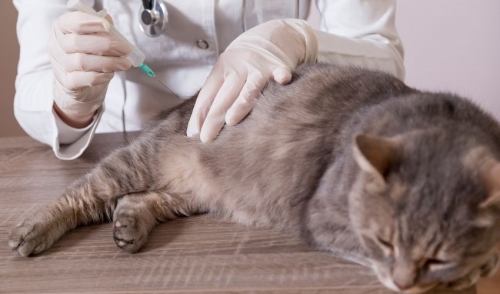
Rabies and Animals
Rabies is a terrifying disease and can be fatal to many different pets and other animals. Understanding rabies, however, is essential to take proper safety precautions against infection and to keep pets, livestock, and people safe.
About Rabies
Rabies is a viral disease, carried by lyssaviruses, that infects the central nervous system. If left untreated, the brain becomes infected and the disease is invariably fatal. First documented in roughly 2000 BC, the disease is found today in more than 150 countries and is present on every continent except Antarctica.
Rabies is transmitted through saliva, and the most common transmission is from bites from an infected animal. The virus can also spread through scratches and other puncture wounds as well, and may even be spread if infected saliva is absorbed through porous membranes such as the eyes, nose, or mouth. Because of this easy transmission, even the safest pets may be at risk if they come into contact with another infected animal.
Animals at Risk From Rabies
All warm-blooded animals can be infected with rabies. Bats, dogs, cats, and raccoons are particularly prone to rabies infections, and the disease has also been widely documented in suburban wildlife such as skunks, coyotes, foxes, and weasels as well, all of which might transmit the disease to domestic pets and livestock. Rabbits, rats, and other small animals and rodents can also carry rabies, though these smaller mammals are often killed by the rabid animal infecting them before they have any opportunity to infect other animals. If a foraging animal comes across an infected carcass, however, such as a dog or cat that might find a dead rat, they can still get infected.
Rabies can also infect livestock such as cattle and horses, and any animal that may be bitten or attacked by another infected animal could contract the disease.
Rabies Symptoms
Depending on the animal infected, the progression of the disease, and the amount of virus present in the animal’s body, symptoms of rabies can vary widely. Early symptoms are particularly vague, and by the time more certain symptoms appear, no effective treatment is possible. Typical symptoms of rabies infections in different animals include:
- Fever, vomiting, and general unwellness
- Unquenchable thirst coupled with a fear of drinking because of painful swallowing
- Heightened senses and hyperactivity
- Increasing aggression and violent behavior
- Muscle tremors, lameness, staggering, or imbalance
Treating Rabies
Because rabies symptoms can be vague and not every animal will exhibit every symptom, the disease can be challenging to diagnose properly until treatment would be too late. Once the more visible symptoms appear – which could occur in just a few days or a few weeks – treatments are often ineffective.
If any animal is potentially exposed to rabies either through a fight with an unknown animal, coming home with open wounds or injuries, or nibbling at a dead carcass, veterinary care should be sought immediately. A period of isolated observation may be necessary to watch for symptoms, and depending on the animal and the exposure, vaccinations and an immediate course of immunoglobulin treatments can be effective at preventing the manifestation of the disease. It is imperative that these treatments begin right away, however, as the longer the virus has to replicate within a body, the more likely it is that the disease will be fatal regardless of treatments attempted after symptoms appear.
Preventing Rabies
While rabies is immensely challenging to treat and nearly impossible to cure, it is surprisingly easy to prevent. Animal vaccinations before rabies exposure are highly effective, and all pets should be vaccinated for rabies and given appropriate boosters as needed. Humans can be vaccinated against rabies as well, and such vaccinations are highly recommended in areas where the disease is most prevalent or for anyone in a career where they may be exposed to the virus, such as wildlife control or veterinarians.
Because this disease can be so devastating, it is important to take additional steps to prevent rabies transmission and infections, including…
- Keeping young pets away from any other animals until they are vaccinated
- Never approaching or interacting with stray or feral dogs or cats
- Not leaving food, scraps, or waste outdoors that might attract wildlife
- Minimizing contact with wildlife, including raccoons, skunks, and bats
- Keeping fences in good repair to protect livestock from predators that may be infected
- Supervising pets at all times to keep them safe from wildlife
- Never allowing pets, including cats and dogs, to freely roam outdoors
- Quickly reporting suspicious animals that may show signs of infection
- Staying alert to news report of rabies detected in the region
If a rabid animal is found in an area, it is critical to raise awareness of the risk so the local community can take proper precautions and any outbreak can be contained as quickly as possible.
Rabies is a deadly, devastating disease, but the better it is understood, the better prepared everyone can be to protect pets and other domestic animals.
